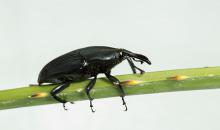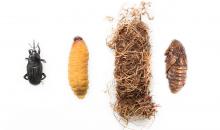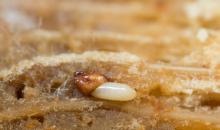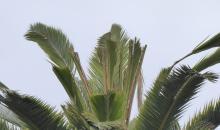Rhynchophorus palmarum(RHYCPA)
Photos
For publication in journals, books or magazines, permission should be obtained from the original photographers with a copy to EPPO.

A canary Islands date palm in Tijuana Mexico killed by Rhynchophorus palmarum. The halo of dead fronds at the top of the trunk is a highly characteristic mortality signature.
Courtesy: Mark S. Hoddle
Bucket traps loaded with aggregation pheromone for capturing live adult Rhynchophorus palmarum adults. The detachable containers below the buckets contain food (e.g., bananas and apples) and provide a dark hiding place for weevils.
Courtesy: Mark S. Hoddle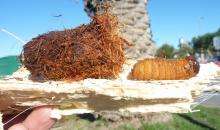
A prepupal Rhynchophorus palmarum larva extracted from its fibrous cocoon. This cocoon was found on the ground under a heavily infested P. canariensis in Tijuana Mexico.
Courtesy: Mark S. Hoddle
The dropped crown of a Canary Islands date palm, Phoenix canariensis, destroyed by R. palmarum in Tijuana Mexico.
Courtesy: Mark S. Hoddle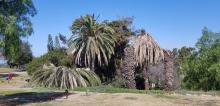
Canary Islands date palms, Phoenix canariensis, killed by R. palmarum in San Diego California, USA.
Courtesy: Mark S. Hoddle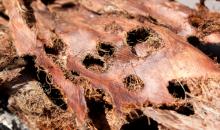
Basal frond sheath showing perforations characteristic of R. palmarum damage.
Courtesy: Mark S. Hoddle
Adult. Laboratory of the Instituto Mineiro de Agropecuária (BR).
Courtesy: Regina Sugayama (Agropec).
